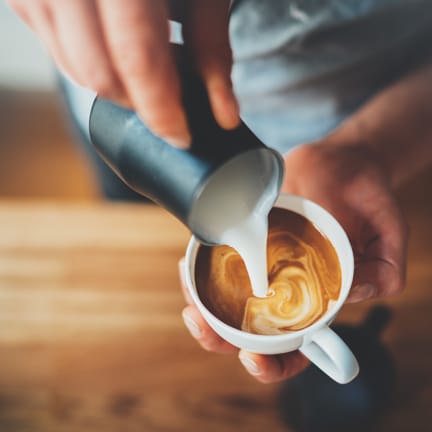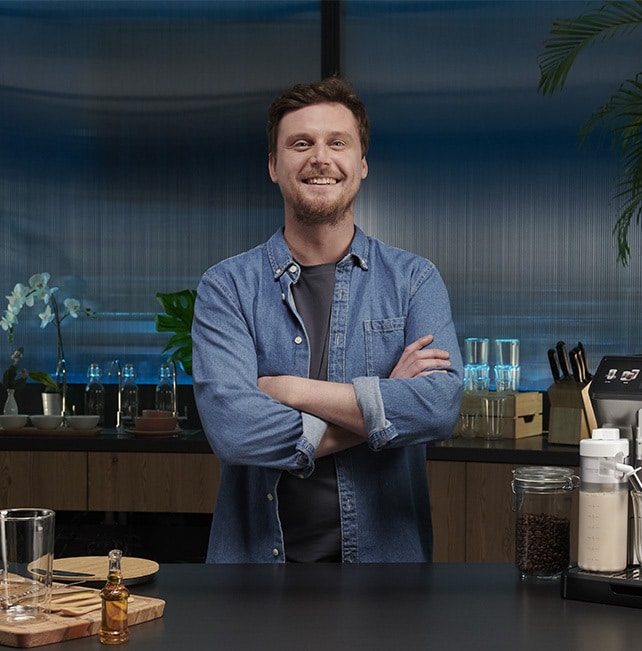- Beans & Roasters
- Sydney Coffee Lounge
The best coffee experience starts here
- Education
The best coffee experience starts here
- Magazine
- Recipes
- About us
The best coffee experience starts here
The best coffee experience starts here

Trends & Lifestyle
Espresso crema might just seem like the cherry on top of a great brew, but truth be told it can often be the make or break to a satisfying cup. Whether you prefer minimal topping or a packed layer of golden froth, getting it right is key to satisfying a broad spectrum of coffee drinkers.
So, what exactly is crema? Also known as the ‘Guinness effect’, crema is formed when the oils in fine-ground coffee combine with air. As the pressurised hot water hits the grounds, those oils are emulsified and saturated with Co2, forming lots of tiny bubbles. Crema contributes to the full-bodied aroma of the coffee and is a good indication of how the rest of the espresso will taste, so it’s an important skill to master.
You should be able to tell if you’ve nailed the crema just by looking at it and evaluating several factors. Firstly, check the colour – healthy crema should be a balanced golden brown (tawny), and smooth in consistency. If it’s too pale or looks gritty, you might need to start again. Ultimately, you’re going for a velvet finish that sits at around 1/10th of the cup’s total volume.
The other two helpful indicators are elasticity and staying power. To test the elasticity of your brew, gently tilt the cup or glass on a 45-degree angle, then back. If the layer of foam retains structure, you’re on the right track. You also want the crema to sit for two minutes before melting into the rest of the espresso – if it’s too thin, it will disappear quickly and won’t have much impact.
Here are some tips to achieving desirable crema.
1. Fresh, high-quality beans
Using beans roasted 24 hours prior to grinding will always produce the best crema. Older beans will have begun oxidising, which can damage the flavour and lead to unbalanced oil content. Try to avoid pre-grinding, and make sure to aim for a fine consistency that allows the water to flow through evenly.
2. The tamp
Making sure your tamping is consistent will always help the crema form more evenly. The pressure with which the grounds are compacted will affect how saturated they are as water passes through – avoiding a weaker brew will help get that velvety layer of golden foam on top.
3. Your machine
The grind of the coffee, water pressure and temperature all play a role in how the coffee is extracted through the portafilter. Fortunately with technology advances, achieving perfect crema has become easier for both those who use a fully automatic or manual machine. Our fully automatic machines will ensure the beans you use are perfectly extracted. Similarly, our La Specialista manual machines have in-built sensor grinding technology, active temperature control, a smart tamping station and dynamic pre-infusion to help users achieve perfect extraction and crema.
Regardless of the machine you use, keeping it clean is paramount. While our bean to cup machines have integrated cleaning functions to automatically clean themselves, you still want to keep the machine wiped down and clean. You want to remove any old coffee grains in the portafilter as these can affect the taste and crema quality in new coffee being made.
4. Water
Since your coffee relies on water, the quality of the water will impact on the crema. Depending on where you live, tap water may negatively impact the quality of your crema. For this reason, you’ll need to test your water’s ‘hardness’ which refers to the limescale levels. We have an excellent video guide to doing this and supply a hardness testing strip with each bean to cup coffee machine. Once you’ve established the hardness level, the machine will automatically remind you when to run an auto descaling programme. Likewise, we also have a series of instructional videos on how to descale your machine.
Achieving the perfect crema may take a bit of work but it’s oh-so-satisfying when you see that golden head atop your coffee. With the above tips as a guideline we have faith you’ll get there – and hope you enjoy the process of experimentation!


Testo vario
Join us
Policies
Support

